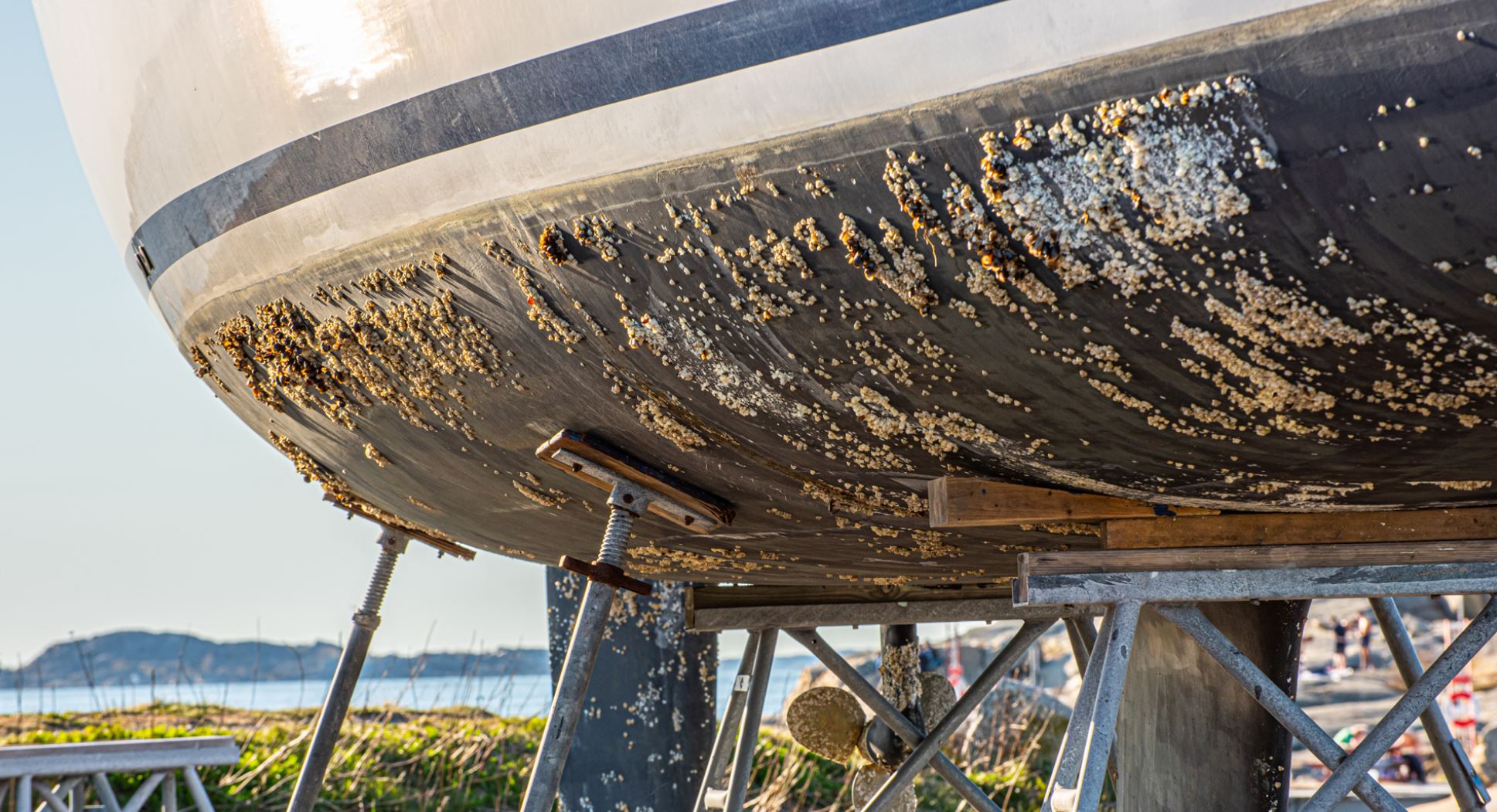Amid lockdowns, travel restrictions and other COVID-19 curbs, many boat owners won’t have had an opportunity to get their boats out of the water and lavish a little TLC on the hull. We’re among them, so we started looking at issue of antifouling with a view to finding a compromise between the needs of Amneris and those of the environment.

Antifouling refers to systems designed to keep marine growth off the hull and other underwater parts of a boat.
Do you even need to antifoul your boat? Strictly speaking, the answer is no. But you will lose out in various areas if you don’t do it, and if your boat spends most of the time in the water inaccessible for cleaning. Your boat will be slower as the bottom growth creates more drag. As a result, a boat that isn’t antifouled will also have much lower fuel efficiency – which is certainly a factor to consider when thinking of the environmental impact of antifouling. Your boat will also be more difficult to manoeuvre. Finally, antifouling can prevent the spread of invasive species between different waters, where their presence may be harmful to the local wildlife.
We don’t mention the aesthetics of a boat with a mucky bottom here. First, the bottom is by definition mostly under the water and out of sight. Second, when considered in the light of environmental protection, aesthetics are, for us, right at the bottom of the list.
Until recently, antifouling was always achieved by applying biocidal paint of some kind. The early antifouling paints were heavy on tributylin (TBT), a highly toxic “nuclear option” that caused serious damage to marine life. It led to some shellfish changing sex, stunted the physical development of some fish, and decreased the efficiency of the immune system in some mammals, such as dolphins. And all the while, TBT was getting into the human food chain via consumption of fish and shellfish. The first bans on TBT in antifouling paint for small boats began to come into force as early as the 1980s, but it wasn’t until 2001 that the International Convention on the Control of Harmful Antifouling Systems on Ships was signed, with global bans on TBT use to be phased in over a number of years.
So what are the options for today’s sailor looking for antifouling solutions? Paint still dominates, and there are typically two types: “hard” and “soft”.
Sailing magazine describes hard antifouling paints as those which “dry into a film containing a biocide that leaches out over time as the boat sits in the water. Typically formulated with harder resins, like epoxy, these antifoulings are tough enough to withstand multiple scrubbings”. These paints are good for racing, powerboats and RIBs, but do need to be scrubbed off several times each year. “Soft” (“ablative” or “self-polishing”) antifoul paints work in a different way. The Trafalgar Group describes these as paints that are “designed to slowly erode as the boat is used, getting rid of marine growth”. These paints wash off the hull at speeds of about 17 knots or more (making them good for sailing boats), and can easily be damaged by scrubbing.
There are, however, alternatives to what might be considered “traditional” antifoul paint solutions for boats.
One is copper coating, using a mixture of epoxy and copper dust. While hard-wearing and long-lasting, copper coating is expensive and really needs the skills of a professional for application. There is the additional problem that copper doesn’t break down, so copper coating can lead to high concentrations of the metal in marine organisms. Then there are nanotech paints, which don’t use biocides at all and are intended to create a surface on the hull that is so slippery that it is impossible for marine organisms to get a hold for long enough to grow.
Last but not least, non-paint antifoul solutions using ultrasonic transducers are available on the market. One good example is the Ultra system, which uses a number of transducers attached to the inside of the hull. The transducers produce ultrasonic frequencies which are transmitted via the hull itself to create a tiny, constantly moving “water shield” below the waterline. These systems don’t yet offer full protection, especially for rudders, propellers and other fittings. There are suggestions that they are combined with one of the methods mentioned above, but it might be worth considering a trade-off between an “almost” clean bottom and having less of an impact on the environment – and it’s certainly something we are thinking about. Bear in mind though that these do need a power source, which needs to be taken into consideration when thinking about how to “green” your boat.
Finally, the Green Blue collaboration between the RYA and British Marine offers best practice advice for sailors who intend to antifoul their boats. They say that boat owners should seek boatyards, clubs or marinas that have designed work areas to ensure any run-off is diverted safely away from open water. They also advise the use of tarpaulins to prevent scrapings and fresh paint from entering the water, and some kind of sander/vacuum cleaner combination to catch dust when removing old antifoul. Also, stay local when selecting paints. It’s likely that the chandlery in the area of your boat will know the kind of paint best for that area, and will be able to help you choose the right system for your boat. And finally, always use personal protective equipment such as masks, gloves, overalls and eye protection when working with antifoul.
